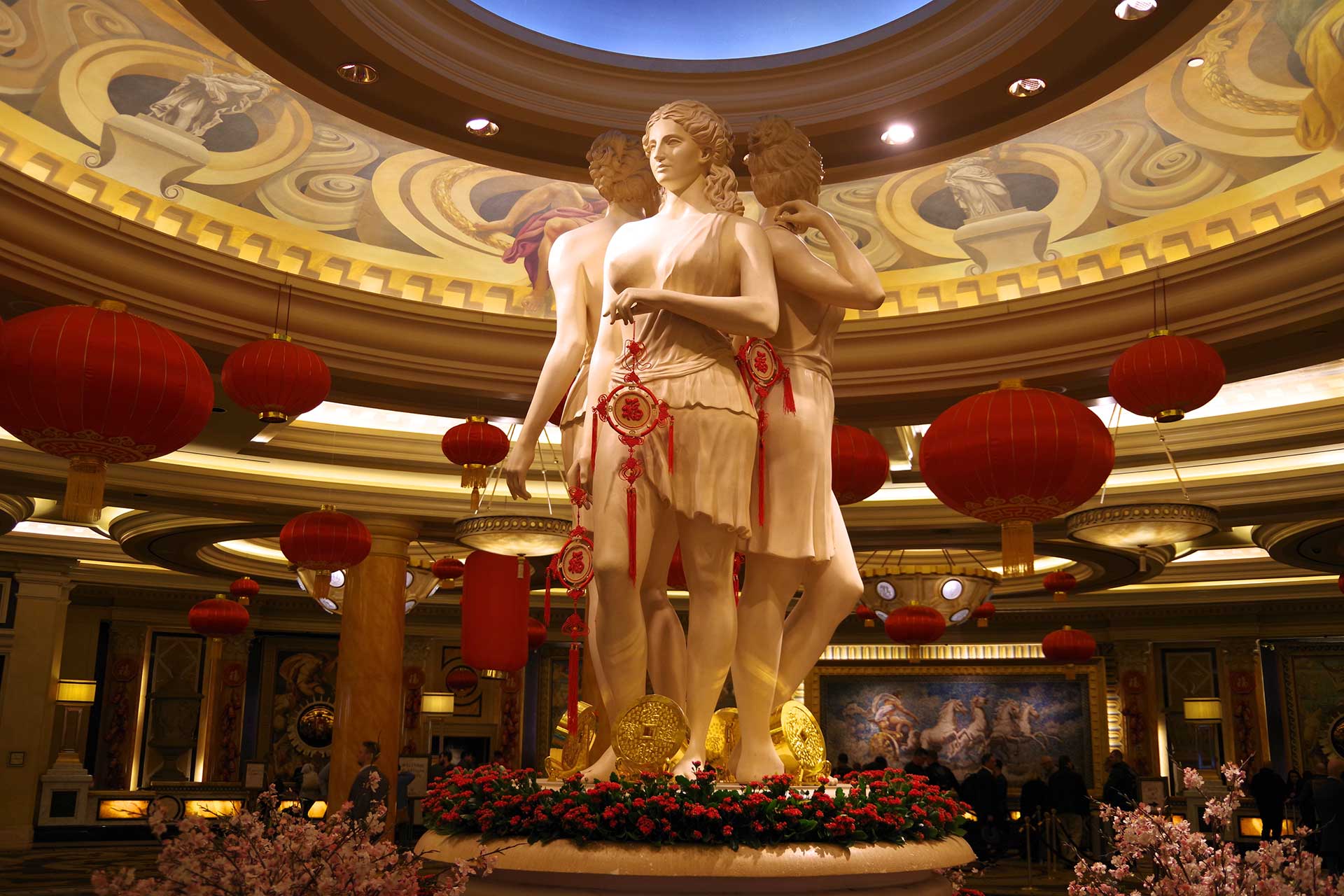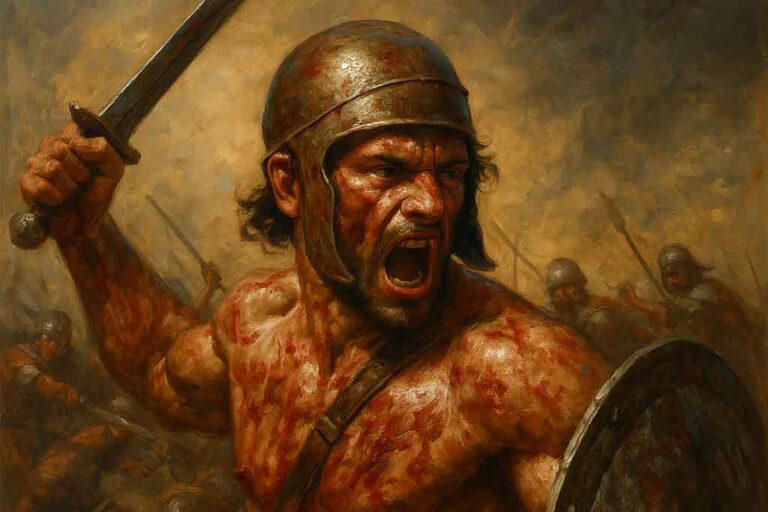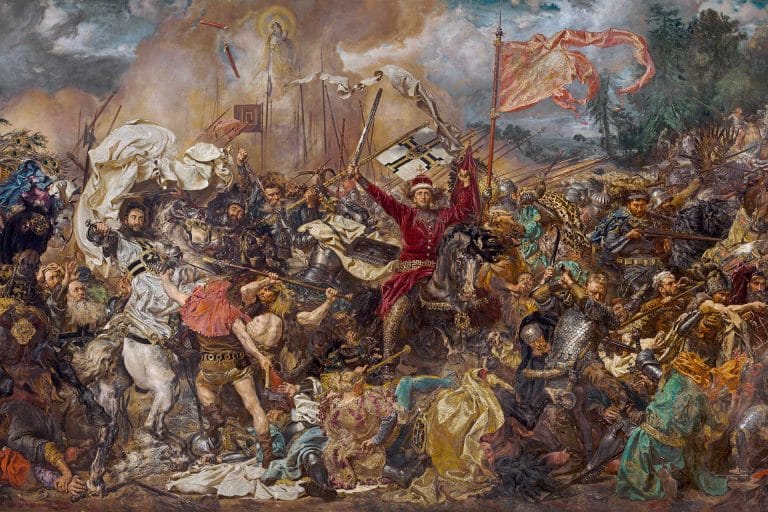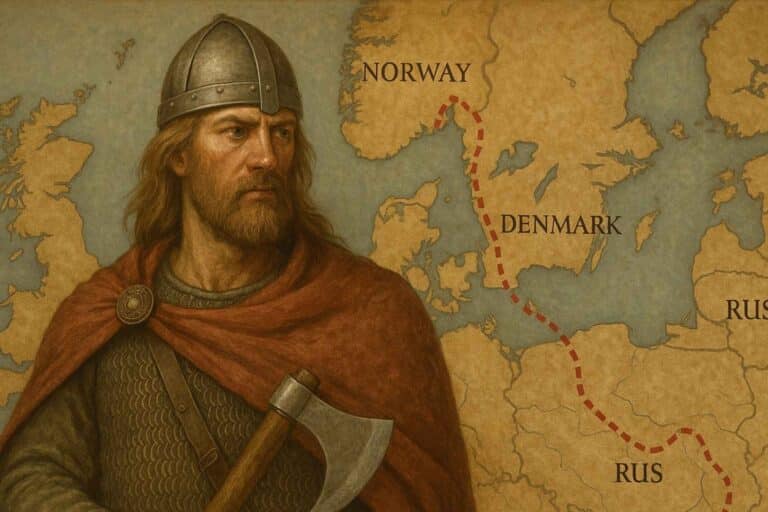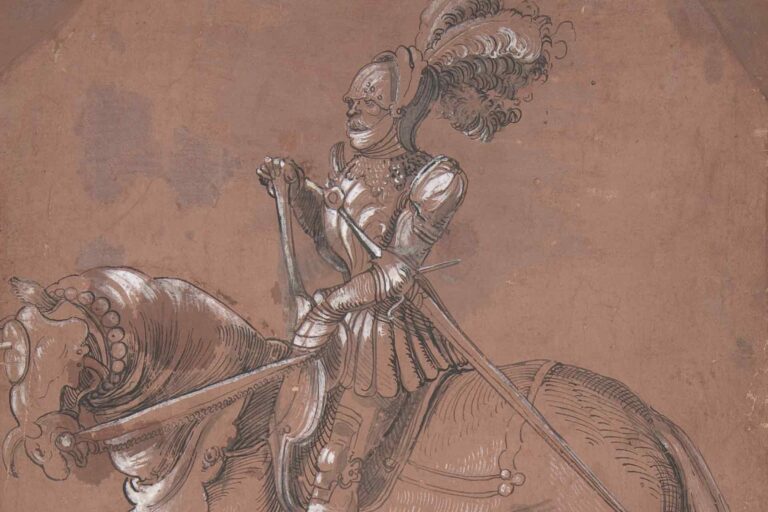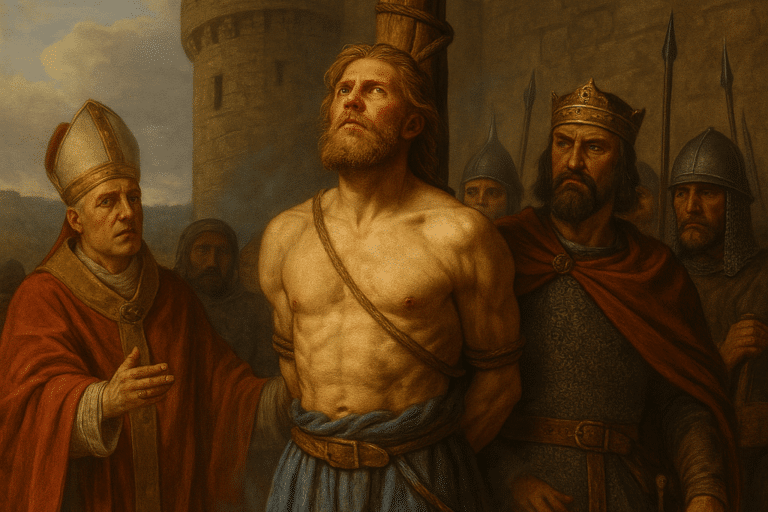New Year’s Celebrations in the Old World
From the ancient streets of Rome to the storybook villages of the Bavarian Alps, time-honored New Year’s festivities are steeped in history and cultural significance, marking the passage of time with an array of unique customs and communal spirit.
New Year’s is not just a fleeting moment but a profound experience in these historic lands, where the past and present seamlessly blend. Communities gather to honor age-old rituals while the air fills with the sounds and scents of heritage—each country offering its distinctive flavor of celebration. As we delve into the heart of these Old World festivities, we uncover the deep-rooted traditions that continue to enchant and unite people in the hope of a promising new year.
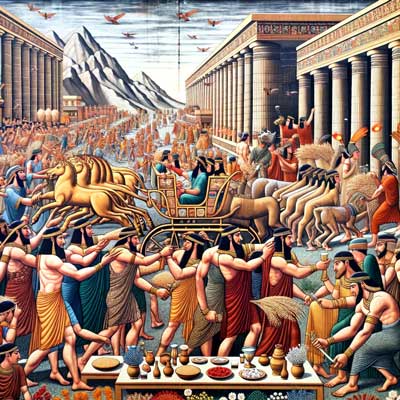
Babylonian Akitu (Ancient Mesopotamia)
In the cradle of civilization, Ancient Mesopotamia, the Babylonian Akitu festival marked the New Year with grandeur and solemnity. This ancient celebration, deeply embedded in the region’s spiritual and cultural fabric, typically occurred around the vernal equinox in late March. It was a common and significant celebration throughout the Bronze Age and into the early Iron Age, reflecting the importance of agriculture and the cycles of nature in Babylonian society.
The Akitu festival lasted twelve days, allowing the Babylonians to engage in elaborate ceremonies designed to reaffirm the king’s divine mandate and ensure the land’s fertility and prosperity for the coming year. One of the central rites was the dramatic ritual of the “humiliation of the king,” where the high priest would strip the king of his regalia, slap him, and drag him by the ears in front of the image of the chief god, Marduk. This act symbolized the king’s human fallibility and his subservience to divine will. The king’s subsequent “restoration” showed Marduk’s forgiveness and blessing for the New Year.
Ordinary people participated actively in the festivities, engaging in processions, feasts, and rituals. They would carry statues of gods in a ceremonial march between temples, reenacting myths and symbolizing the regeneration of life. Festive meals likely included an abundance of grains, fruits, and meats, reflecting the agricultural bounty that Mesopotamians hoped to secure for the coming year. The Akitu festival was not just a time of joy and celebration but a profound communal undertaking that reaffirmed the Babylonians’ connection to their gods, their king, and the cyclical nature of life and time.
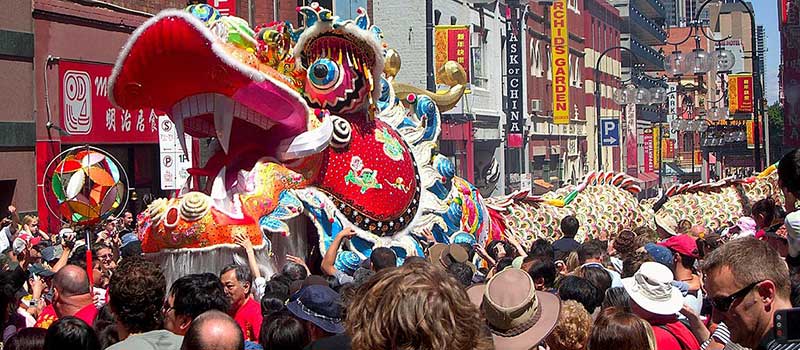
Chinese New Year (China)
Chinese New Year, also known as Spring Festival, is one of China’s oldest and most significant celebrations, with roots stretching back over thousands of years, commonly believed to have originated during the Shang Dynasty (c. 1600 – 1046 BC). This grand festival begins on the first day of the Chinese lunar calendar, usually falling between January 21st and February 20th, and traditionally lasts for 15 days, culminating in the Lantern Festival. Based on the lunar-solar calendar, its timing reflects the agrarian culture’s need to mark the end of winter, the beginning of spring, and the growing season.
The celebration of Chinese New Year is a vibrant and all-encompassing event characterized by a rich tapestry of cultural traditions. Families undertake a thorough house cleaning, known as “sweeping the dust,” symbolizing the expulsion of old luck and making way for new fortunes. Red decorations, lanterns, and couplets adorn homes, streets, and businesses, with red symbolizing good fortune and joy. The reunion dinner on New Year’s Eve is a focal point, bringing families together over dishes like dumplings, fish, and niangao (rice cake), each carrying symbolic meanings of prosperity, abundance, and rising fortune.
The beliefs and rituals designed to welcome good luck, health, and prosperity are central to the Chinese New Year. Fireworks and firecrackers are set off to scare away the mythical beast Nian and to ward off evil spirits. Giving red envelopes (hongbao) containing money is a common practice to transfer fortune and blessings. Dragon and lion dances, symbols of strength, goodness, and luck, are performed in public spaces to drive away further bad luck and bring in a prosperous new year. The depth and breadth of the Chinese New Year’s celebrations reflect not just a wish for personal well-being but a communal hope for harmony, balance, and renewal in the natural and spiritual world.
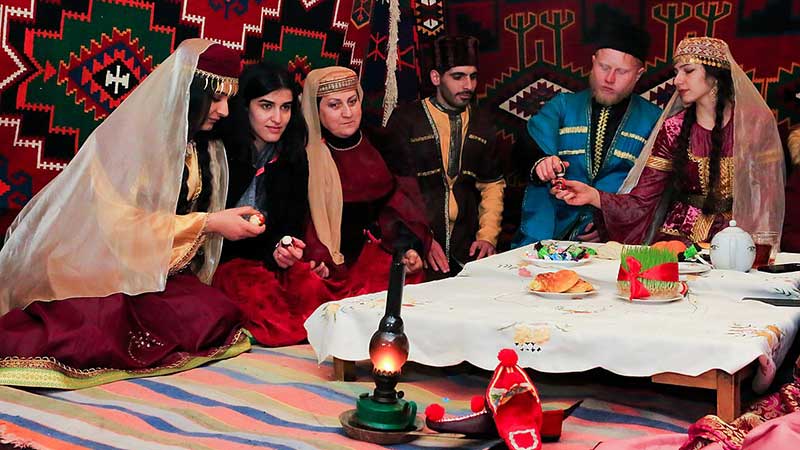
Nowruz (Persian Empire)
Nowruz, marking the Persian New Year, is a celebration observed for over 3,000 years, dating back to the era of the Achaemenid Empire (c. 550–330 BC). This ancient festival, which signifies the first day of spring and the renewal of nature, typically falls on the vernal equinox, around March 20th or 21st. It ushers in a period of new beginnings as days grow longer and the earth reawakens from its winter slumber.
The festivities of Nowruz are rich in symbolism and tradition, reflecting the values and beliefs of Persian culture through the ages. One of the most iconic elements is the Haft-Seen table, a unique arrangement of seven symbolic items whose names start with the letter ‘S’ in the Persian alphabet. These items typically include sabzeh (sprouted wheat grass, representing rebirth), samanu (sweet pudding, symbolizing affluence), senjed (dried oleaster fruit, for love), sir (garlic, for medicine), sib (apples, symbolizing beauty and health), somaq (sumac, representing the sunrise), and serkeh (vinegar, symbolizing age and patience). Each element carries a specific meaning, contributing to the overarching theme of renewal, health, and prosperity.
In addition to the Haft-Seen, Nowruz is celebrated with various customs and activities. People use thorough house cleanings, known as ‘khooneh tekouni’ or ‘shaking the house,’ to rid their homes of last year’s dust and prepare for a fresh start. Families and friends visit one another, often exchanging gifts and sharing festive meals. Traditional foods like sabzi polo (herbed rice) with mahi (fish) and kuku sabzi (herb frittata) are commonly enjoyed. The celebration of Nowruz is not just a cultural observance but a universal message of harmony and respect for nature, embodying the ancient Persian principles of Good Thoughts, Good Words, and Good Deeds and fostering a sense of solidarity and renewal among communities.
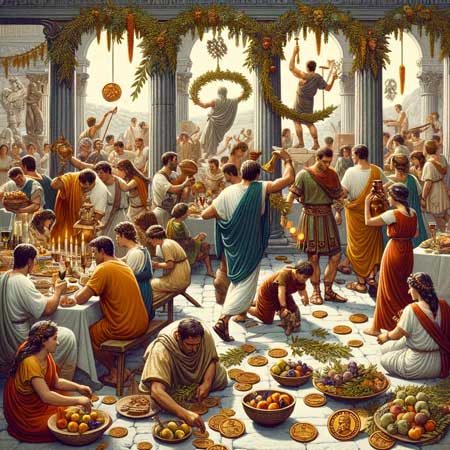
Ancient Roman New Year (Rome)
The Ancient Roman New Year, initially celebrated on the 1st of March in the early Roman calendar, shifted to the 1st of January during the reign of Julius Caesar in 45 BC. This alteration resulted from the Julian calendar’s introduction, and the day was dedicated to Janus, the god of gates and beginnings, after whom January was named. The New Year became a time for looking back at the past and forward to the future, quite fitting for a deity depicted with two faces, one looking forward and the other backward.
During this period, Romans engaged in various festivities and rituals to honor the gods and usher in a prosperous and fortunate new year. They would decorate their homes with laurel branches and exchange gifts of figs and honey, wishing each other sweetness and well-being in the coming year. Common gifts also included coins for prosperity, which might bear the likeness of Janus. Feasting was essential to the celebration, with lavish meals prepared to ensure abundance and fortune. Public and private sacrifices were made to Janus, seeking his blessings for a prosperous year ahead.
The celebration of the New Year was also a time for Romans to make resolutions, often of a moral nature, such as seeking forgiveness from enemies or behaving more virtuously in the coming year. This tradition of resolutions is believed to have persisted through the ages and is still a part of modern New Year celebrations. The Ancient Roman New Year was not just a time of joy and festivity but also a period for reflection, reconciliation, and hope for renewal, embodying the timeless human desire for a fresh start and a better future.
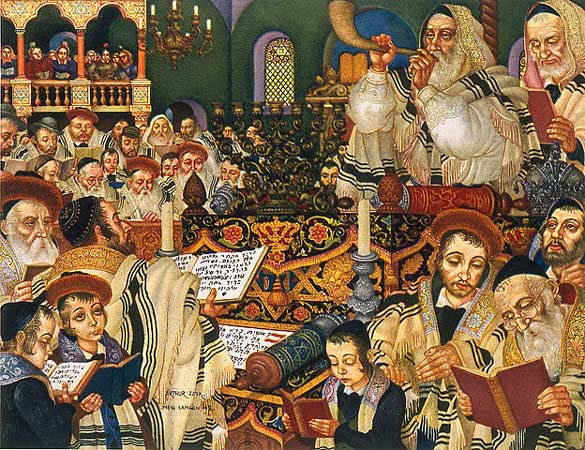
Rosh Hashanah (Jewish)
Rosh Hashanah, the Jewish New Year, is one of the holiest days in Judaism, marking the beginning of the ten Days of Awe leading up to Yom Kippur, the Day of Atonement. This celebration occurs on the first two days of Tishrei, the seventh month of the Hebrew calendar, usually in September or October. The origins of Rosh Hashanah are found in the Bible and have been observed since ancient times, with its traditions evolving over centuries during the First and Second Temple periods.
The holiday is solemn and celebratory, with rituals and customs designed to reflect on the past year and make resolutions for the coming one. One of the most iconic symbols of Rosh Hashanah is the shofar, a ram’s horn trumpet, blown in a series of patterns to awaken spiritual introspection and signal a call to repentance. The shofar’s blasts are meant to stir the soul and remind the faithful of the importance of reflection during this time. Traditional services are held in synagogues, where special prayers and scriptural readings focus on creation, kingship, and remembrance themes.
Food also plays a significant role in Rosh Hashanah observances, embodying wishes for a sweet and fruitful year. Apples dipped in honey, pomegranates, and round challah bread symbolize the cycle of the year and the hope for renewal and completeness. The holiday meal is often festive, with family and friends sharing dishes rich in symbolism and tradition. Rosh Hashanah is not merely a celebration of the new year; it’s a time for personal introspection, community, and spiritual renewal. It embodies the ancient Jewish belief in the power of reflection and repentance and the enduring hope for a better, more meaningful life in the year to come.
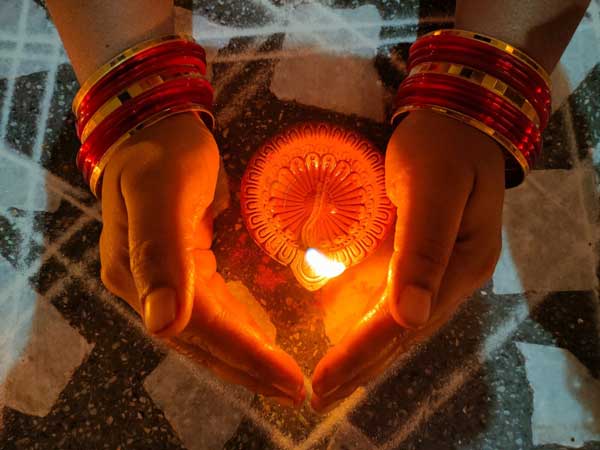
Diwali (India)
Diwali, known as the Festival of Lights, is one of India’s most beloved and widely celebrated festivals, with its origins traced back to ancient times, as early as the first millennium BCE. This festive occasion typically takes place over five days during the Hindu month of Kartika, which falls around October or November. While Diwali has been celebrated for centuries, it has evolved, incorporating various cultural and regional practices, making it a rich tapestry of traditions and customs.
The celebration of Diwali is marked by a vibrant display of lights, with diyas (oil lamps) and candles illuminating homes, temples, and public spaces, symbolizing the victory of light over darkness and knowledge over ignorance. Fireworks and the decoration of buildings with colorful lights are standard, adding to the festive atmosphere. The exchange of gifts and sweets between friends and family is customary, fostering a sense of community and goodwill. Special prayers and rituals, known as pujas, honor Lakshmi, the goddess of wealth and prosperity, and Ganesha, the remover of obstacles, seeking their blessings for a prosperous year ahead.
Food plays a central role in Diwali celebrations, with families preparing and sharing a feast of traditional dishes and sweets like ladoos, jalebis, and samosas. The festival is a time for rejoicing, reflection, and cleansing. Many people clean and decorate their homes in preparation, symbolizing the removal of spiritual darkness and the welcoming of divine light. Diwali is a multifaceted celebration, embodying India’s rich cultural and spiritual heritage. It’s a time for renewal, fostering social bonds, and rejoicing in the triumph of good over evil, light over darkness, and hope over despair.
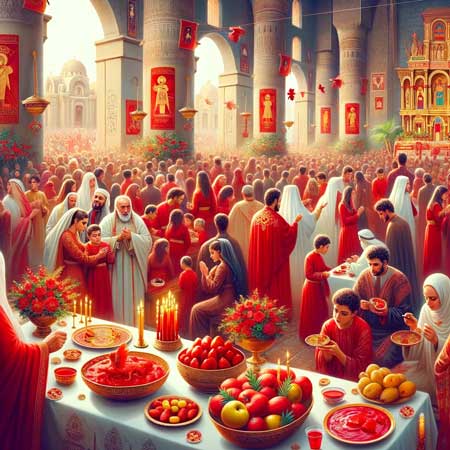
Al-Neirouz (Coptic Egypt)
Al-Neirouz marks the Coptic New Year and is a significant celebration within the Coptic Orthodox Church of Egypt, with its origins dating back to ancient Egyptian times. The festival occurs on the 1st of Thout, the first month of the Coptic calendar, which typically corresponds to September 11th in the Gregorian calendar or September 12th in leap years. Al-Neirouz signifies the beginning of the year and has been celebrated since the Pharaonic era. Still, it gained particular significance for the Coptic community during Roman rule and Christian persecution.
The celebration of Al-Neirouz is both a cultural and spiritual event, blending ancient Egyptian customs with Christian beliefs. It is a time of remembrance and renewal. Traditionally, Copts attend church services, where special hymns and prayers are recited, and the lives of the martyrs and saints are honored, reflecting the period’s history of persecution and the steadfastness of faith. The red color, often seen in clothes and decorations, symbolizes the blood of the martyrs. It’s a day for solemn remembrance and the joyful celebration of endurance and faith.
Festivities during Al-Neirouz include preparing and sharing special foods. Typical dishes might consist of red dates and guava, symbolizing the blood of martyrs and the promise of heaven, respectively. People also exchange visits with friends and family, offering each other well wishes for the New Year. Al-Neirouz is not just a commemoration of the past; it’s a time for the Coptic community to look forward with hope, reaffirming their heritage and faith while celebrating the resilience and continuity of their ancient traditions in the present day.
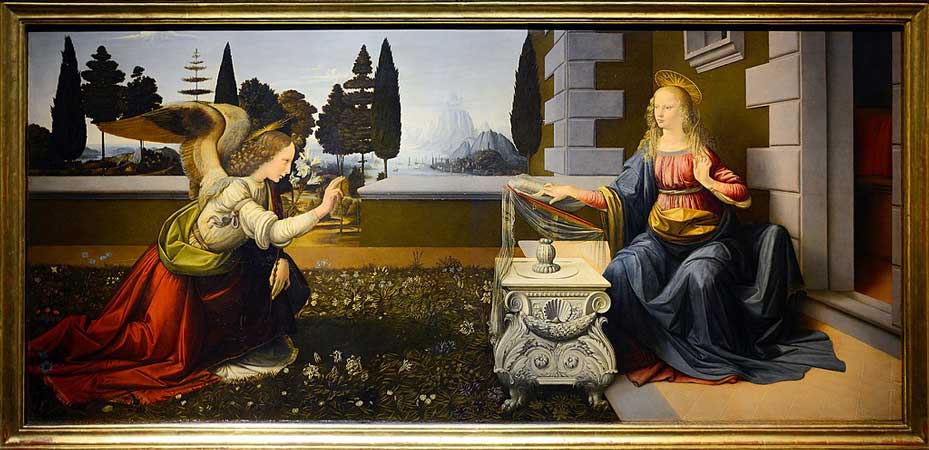
The Medieval European Feast of Annunciation
The Feast of the Annunciation, also known as Lady Day, was a significant celebration in Medieval Europe, marking the moment the Archangel Gabriel announced to the Virgin Mary that she would bear the Son of God. Observed on March 25th, this Christian feast coincided with the beginning of the new year in many parts of medieval Christendom until the adoption of the Gregorian calendar in the 16th century. The period during which it was most commonly celebrated spans the Middle Ages, when religious feasts played a central role in Europeans’ social and spiritual lives.
Various religious and communal activities marked the Feast of the Annunciation. Church services featured special liturgies and masses to honor the Incarnation of Christ, with the Hail Mary prayer recited with particular reverence on this day. The air would be filled with the ringing of church bells, calling the faithful to worship and celebration. In addition to the religious observances, the day was a time of community gathering and festivity. People would come together to enjoy a feast, often featuring unique dishes prepared for the occasion. Since it fell during Lent, a period of fasting and repentance, the food served on this day was sometimes an exception to the typical Lenten restrictions, making it a particularly welcome celebration.
The Feast of the Annunciation was deeply rooted in Christian beliefs and the biblical narrative of Mary’s divine selection to be the mother of Jesus. It symbolized hope and renewal, reflecting the more prominent themes of the Christian faith concerning salvation and divine grace. The day it was served as a reminder of the miraculous and profound connection between the sacred and the earthly realms. As such, it was not just a celebration but a day of spiritual reflection and reverence, embodying the profoundly religious mindset that characterized the Medieval period.

Songkran (Thailand)
Songkran, Thailand’s most famous festival, celebrates the Thai New Year, a tradition dating back to ancient times. It typically takes place from April 13th to 15th, marking the end of the dry season and the beginning of the annual rains, when nature rejuvenates and life is renewed. While the festival has roots in the Buddhist-Hindu heritage of Southeast Asia, it has evolved over the centuries. It is now a national celebration known for its water rituals, which have become synonymous with Songkran.
The celebration of Songkran is a unique blend of religious solemnity and playful festivity. Traditionally, it begins with the ritual of cleaning houses and public spaces, symbolizing a fresh start for the New Year. People visit temples to offer the monks food and participate in the ceremony of bathing Buddha statues, which is believed to bring good luck and prosperity. This ritual cleansing is extended to elders in the community, where scented water is gently poured over their hands in a gesture of respect and blessing.
The most visible and exuberant aspect of Songkran is the nationwide water fight. Streets are filled with people joyously splashing water on each other, using buckets, hoses, and water guns. This fun-filled activity is more than play; it symbolizes the washing away of misfortunes and sins of the past year, thus purifying individuals for the year ahead. Traditional foods and sweet treats are shared among family and friends, and many enjoy the festive atmosphere with music and dance. Songkran embodies the spirit of community, purification, and joy, reflecting Thailand’s rich cultural and spiritual tapestry while welcoming the promise of the new year with open arms and uplifted spirits.
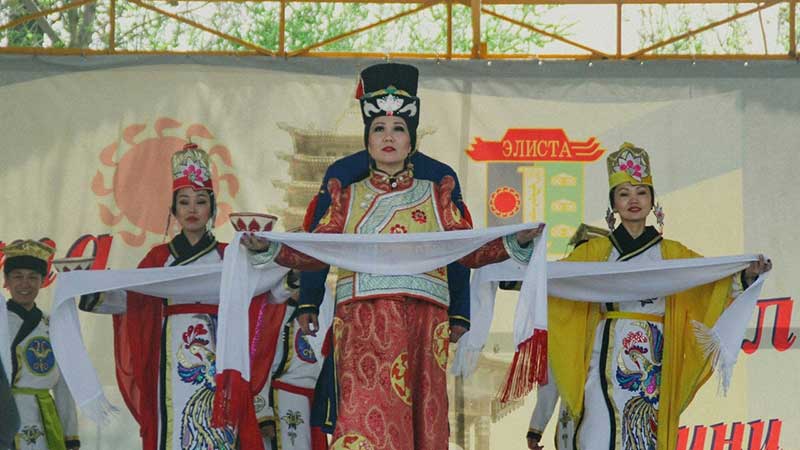
Tsagaan Sar (Mongolia)
Tsagaan Sar, meaning “White Moon,” is the Mongolian celebration of the Lunar New Year, marking the end of winter and the beginning of spring. This important festival typically occurs at the end of January or February, corresponding with the first new moon after the winter solstice. The tradition dates back hundreds of years, is deeply rooted in the nomadic customs and the shamanistic beliefs of ancient Mongolia, and has evolved to incorporate Buddhist traditions.
The celebration of Tsagaan Sar is a time of renewal and rejuvenation. Preparations involve thorough cleaning of homes and settling debts, symbolizing a fresh start for the new year. The holiday commences with a ceremony called ‘Bituun,’ the day before the new moon, where families gather for a feast to ensure abundance in the coming year. Traditional foods are central to the celebration, with dishes such as “buuz” (steamed dumplings), “ul boov” (a tower of layered cakes), and dairy products being particularly prominent. The white color of many foods consumed during Tsagaan Sar symbolizes purity, happiness, and the potential for a prosperous year.
During Tsagaan Sar, Mongolians wear their best clothes or traditional dress and visit their elders’ homes in order of age, offering greetings and respect in a practice known as ‘Golgotha.’ It’s a time for honoring ancestors and strengthening family bonds. Elders impart blessings and give gifts, usually money, to younger visitors. The ritual of exchanging snuff bottles, elaborately decorated containers for powdered tobacco, is also a customary sign of respect and camaraderie. Tsagaan Sar embodies the Mongolian values of respect for nature and ancestors, community cohesion, and the hope for renewal and prosperity that resonates with the nomadic spirit of the Mongolian people.
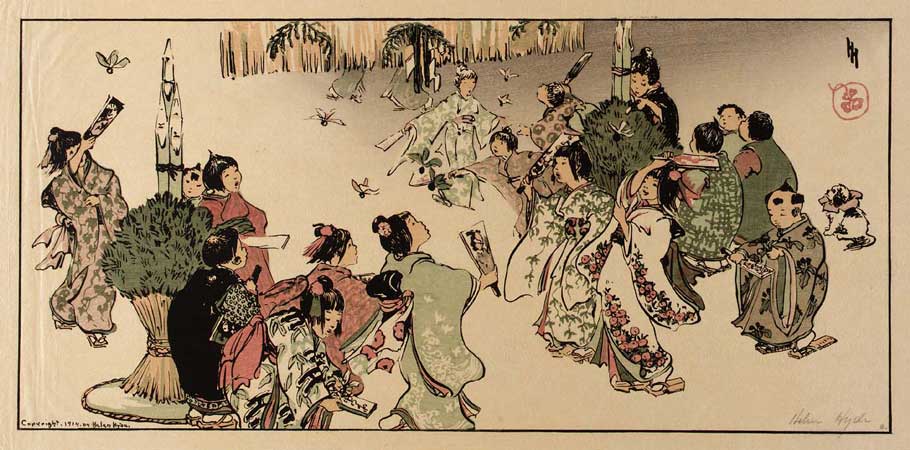
Oshogatsu (Japan)
Oshogatsu, the Japanese New Year, is one of Japan’s most essential and heartfelt celebrations, with traditions dating back to the 8th century. The festival begins on January 1st and lasts until January 3rd, a period known as ‘Sanganichi.’ Historically, Oshogatsu was influenced by Chinese New Year customs. However, it evolved over the centuries to acquire its unique Japanese characteristics, particularly after adopting the Gregorian calendar in the late 19th century during the Meiji Restoration.
The celebration of Oshogatsu is a time of renewal, family reunion, and gratitude. In the days leading up to the New Year, Japanese homes undergo a thorough cleaning in a tradition known as ‘osoji,’ symbolizing the purification of the home and spirit for the coming year. Kadomatsu, pine decorations, and Shimekazari, sacred Shinto straw ropes, are placed at the entrance of homes to welcome ancestral spirits and bring good fortune. The ringing of temple bells 108 times at midnight, known as ‘Joya no Kane,’ is believed to dispel the 108 earthly desires and cleanse the soul for the New Year.
Special foods, known as ‘osechi-ryori,’ are prepared in elaborate boxes called ‘jubako.’ Each dish and ingredient in osechi carries a specific meaning, such as good health, fertility, or prosperity. Mochi, or rice cakes, are also a staple of New Year celebrations. Families often gather to watch the first sunrise of the year, a practice known as ‘Hatsuhinode,’ symbolizing the wish for a bright and hopeful year ahead.
Additionally, people visit shrines and temples to pray for blessings in the coming year, a practice known as ‘Hatsumode.’ Oshogatsu is not just a festive time but a sacred period filled with rituals and practices that reflect the Japanese values of respect for nature, family bonds, and the hope for peace and prosperity in the New Year.
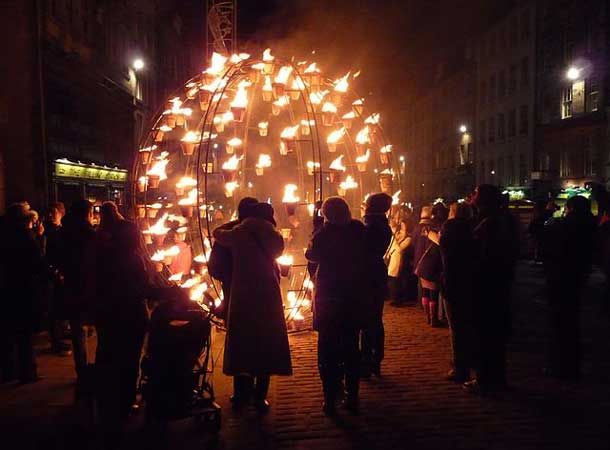
Hogmanay (Scotland)
Hogmanay is Scotland’s rousing celebration of the New Year, a festival with roots that reach deep into the country’s ancient past. While the exact origins blend Norse and Gaelic customs, Hogmanay became especially prominent in the 17th century after the Protestant Reformation, when Christmas was suppressed and festivities shifted to the New Year. The celebration commences on December 31st and continues into the early hours of January 1st, with some traditions extending even further.
The customs and activities of Hogmanay are diverse and rich in cultural significance. One of the most famous traditions is ‘First-Footing,’ which holds that the first person to cross the threshold of a home after midnight will bring good luck for the coming year. This first-footer is traditionally a dark-haired man and is expected to bring symbolic gifts like coal, shortbread, salt, whisky, or black bun, representing warmth, food, flavor, and good cheer, respectively. Another widespread custom is singing “Auld Lang Syne,” a Scottish poem set to music, which has become synonymous with New Year celebrations worldwide. The Hogmanay festivities are particularly famous in Edinburgh, featuring a massive street party, concerts, and a spectacular fireworks display at midnight.
Hogmanay also involves the ‘burning of the clavie,’ a fire festival in the town of Burghead, and the swinging of fireballs in Stonehaven, where participants parade through the streets swinging balls of fire over their heads, symbolizing the sun and purifying the coming year. The underlying belief of Hogmanay is the clearing out of the old year’s vestiges and welcoming the new with warmth and spirit. It’s a time for community gathering, reflecting on the past, and looking forward optimistically. Hogmanay not only marks the passage of time but also celebrates Scotland’s enduring spirit and vibrant culture, making it a unique and exhilarating welcome to the New Year.

Imbolc (Celtic)
Imbolc is an ancient Celtic festival marking the beginning of spring, traditionally celebrated from the evening of February 1st to the evening of February 2nd. This festival has deep roots, dating back to the pre-Christian era in Ireland and Scotland, and it was widely observed throughout the Celtic lands during the late Iron Age and early Medieval period. Imbolc is one of the four major “fire” festivals in the Celtic tradition, positioned halfway between the winter solstice and the spring equinox, symbolizing the awakening of life from the cold grip of winter.
The celebration of Imbolc was deeply intertwined with the Celtic reverence for the natural world and the changing of the seasons. It was associated with the goddess Brigid, who represented the dawn, spring, fertility, and healing. People would create Brigid’s crosses from rushes or reeds, believed to protect homes and livestock from harm and evil. Homes were cleansed, and hearths were relit to invite the warmth and light of the returning sun. Special foods prepared during Imbolc included dairy products and seeds, symbolizing the potential for new life and future agricultural abundance.
Imbolc was not just a celebration of the physical return of spring but also a time for spiritual renewal and purification. The lighting of candles and fires represented the return of warmth and the increasing power of the sun over the coming months. Poetry, storytelling, and divination were typical festivities, reflecting the Celts’ deep cultural connection to the arts and the mystical. As a time of new beginnings, Imbolc was an occasion for setting intentions and preparing for the year’s growth ahead, both in the fields and within the spirit.
The enduring legacy of Imbolc is reflected in modern celebrations, where the ancient traditions continue to symbolize hope, renewal, and the enduring cycle of life and nature.
Embracing Traditions: A New Year’s Tapestry
As we’ve journeyed through the diverse New Year’s celebrations of the Old World, from the ancient streets of Rome to the highlands of Scotland, it’s clear that these festivities are far more than mere markers of time. They are a vibrant mosaic of culture, history, and shared human experience. Each celebration, with its unique customs, foods, and beliefs, is a testament to the enduring spirit of hope and renewal that the New Year symbolizes across the globe.
In closing, the traditions we’ve explored tell a story of humanity’s continual quest to honor the past while looking forward to the future. Whether it’s through the lighting of candles, the sharing of a meal, or the singing of ancient songs, these celebrations connect us to our ancestors and each other. They remind us that, despite the passage of time and the changing of calendars, the desire for a fresh start and a better world is a universal hope that transcends ages and borders. As we celebrate the New Year in our ways, let us carry forward the lessons of unity, renewal, and joy that these Old World traditions beautifully illustrate.
Featured Image Attribution: pelican, CC BY-SA 2.0 https://creativecommons.org/licenses/by-sa/2.0, via Wikimedia Commons

